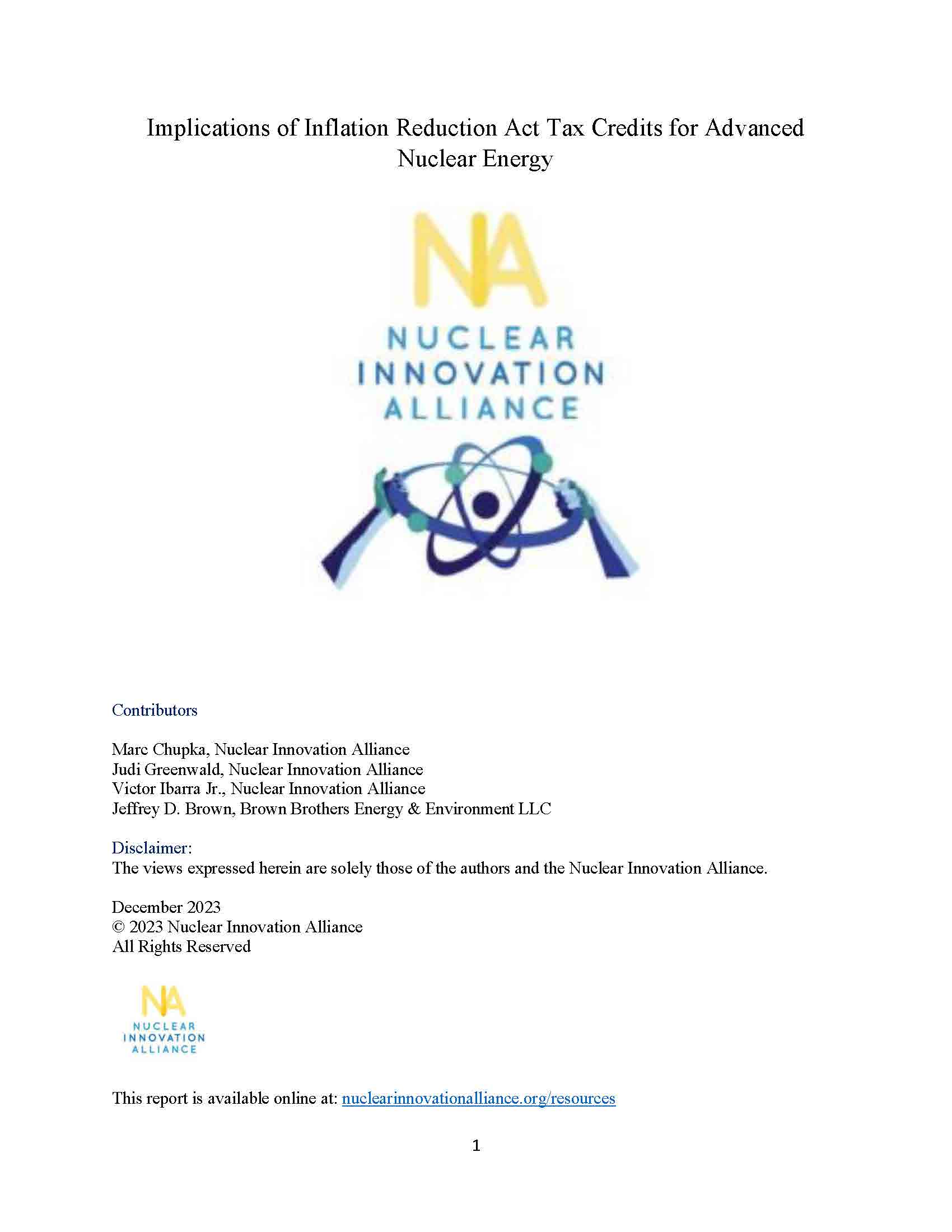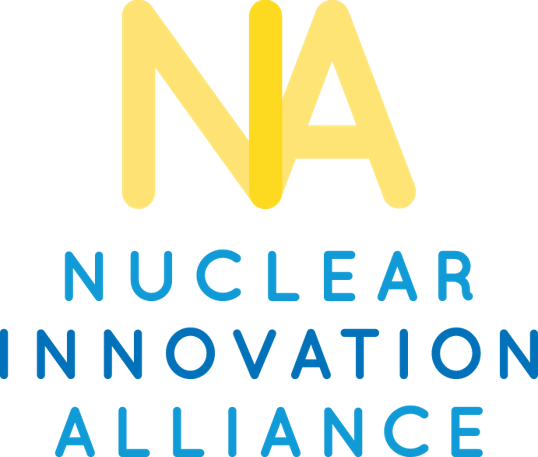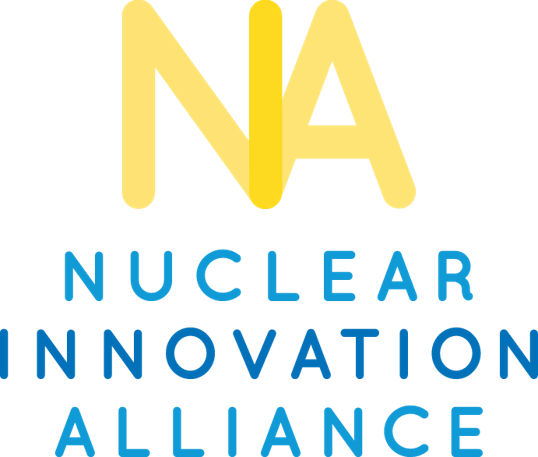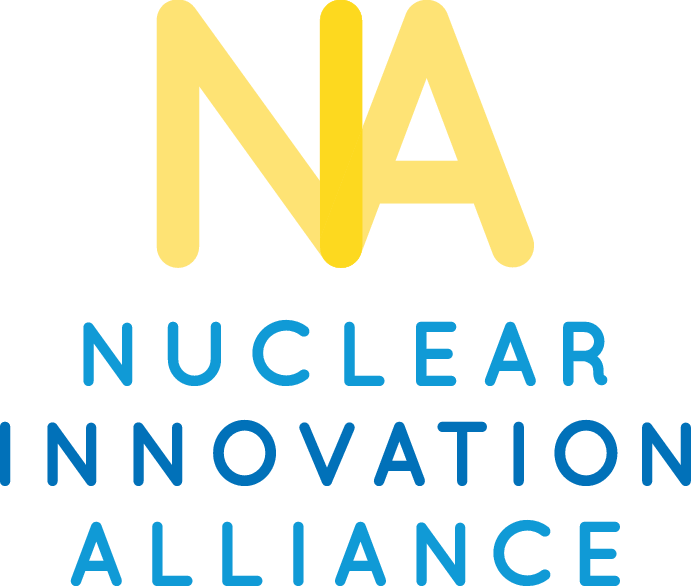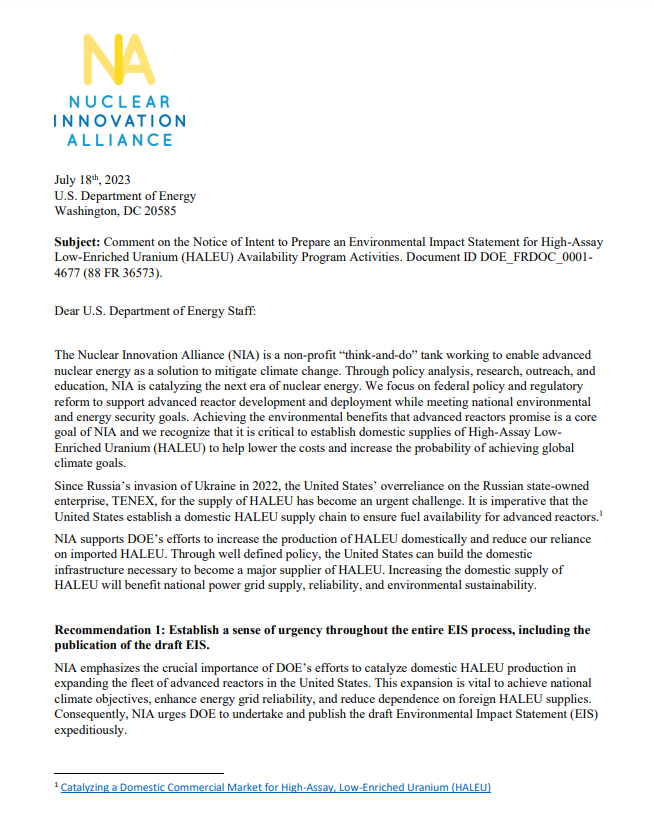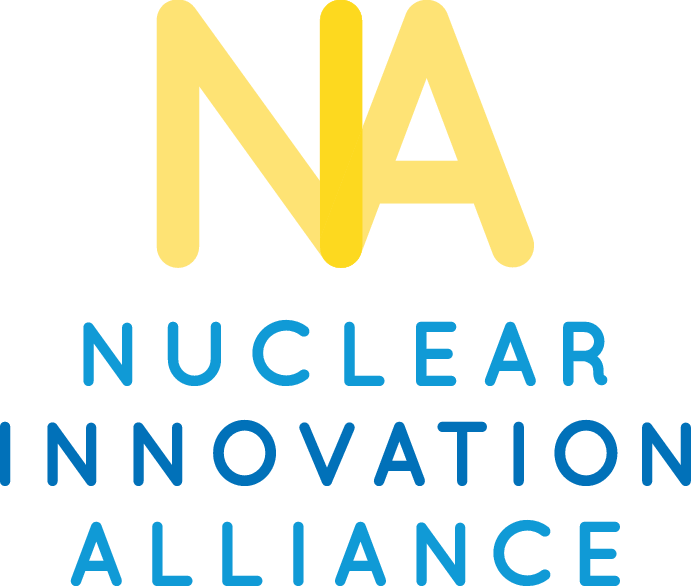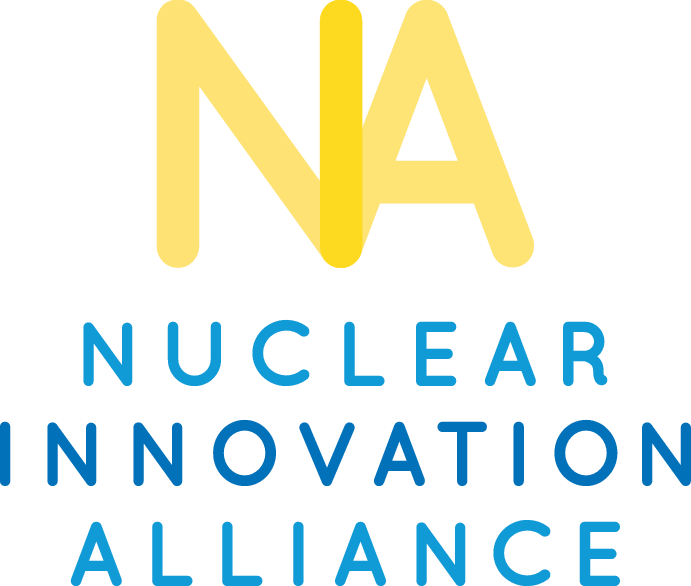Implications of Inflation Reduction Act Tax Credits for Advanced Nuclear Energy
This paper focuses the impact of the new Inflation Reduction Act clean electricity tax credits on new nuclear energy projects, using the same tools developed for an initial 2021 NIA analysis. The results show that the current IRA tax credits effectively reduce the costs of electricity produced by advanced nuclear projects, both for first-of-a-kind and nth-of-a-kind projects, which will enable advanced nuclear reactors to compete effectively with other clean and firm generation options.
This is a letter, signed by NIA and other non-government organizations, that recommends the NRC develop a Policy Statement on efficient, effective and predictable licensing of new reactors. The organizations signing this letter agree that, at a minimum, there are five main elements that need to be addressed within this new Policy Statement.
Fueling Your Future - Introduction to Advanced Reactors and Workforce Sectors
The Nuclear Innovation Alliance (NIA) and the Nuclear Innovation Bootcamp (NIB) hosted a webinar event series entitled Fueling Your Future for NIB Alumni. This panel covered introductions to the Nuclear Innovation Alliance, Workforce Sectors, Advanced Reactors 201, and updates on the Nuclear Innovation Bootcamp. The panel featured NIA's own Judi Greenwald, Patrick White, and Devin Watts as panelists. Mya Zepp served as moderator.
Resources for Coal Repowering with Nuclear Energy
This document serves as a high-level introduction to coal repowering with nuclear energy (also known as coal power plant repurposing, or coal-to-nuclear transitions) and a directory of useful resources for those looking to dive deeper into the topics discussed herein. It presents the key concepts, opportunities, and challenges associated with this energy transition, and provides readers with solid foundations and condensed information, facilitating a comprehensive understanding of this subject matter. It is intended for a diverse range of stakeholders interested in exploring coal repowering with nuclear energy, and is meant to foster informed decision-making, strategic planning, and meaningful discussions that contribute to coal repowering efforts. Policymakers, industry stakeholders, researchers, community leaders, potential customers, and interested individuals will find a concise overview of coal repowering to help navigate the multifaceted aspects of this energy transition and the extensive body of literature already available.
NIA's Media Briefing on new Deployment Maps, updated Primer, and updated Company Compendium.
In July 2023, the Nuclear Innovation Alliance (NIA) released two new Deployment Maps that showcase scheduled deployments of North American advanced reactors design across the United States, Canada, Europe, and Asia. Alongside the release of the two Deployment Maps, NIA also release an updates of their “Advanced Nuclear Reactor Technology: A Company Compendium” and their “Advanced Nuclear Reactor Technology: A Primer”. These releases were accompanied by a Zoom media briefing event. The NIA's new and updated reports provide information, resources and insights into advanced nuclear technology innovation and commercialization. They should serve as resources for investors, reporters, policymakers, regulators and others who want to learn more about advanced nuclear technologies and the key players building this industry.
NIA's response to the Department if Energy's Notice of Intent (NOI) to prepare an environmental impact statement (EIS) for the high-assay low-enriched uranium (HALEU) availability program.
Fire2Fission Podcast featuring Patrick White
Patrick White join's and Mark Hinaman on the Fire2Fission podcast to discuss microreactors, the nuclear regulatory commission, and Patrick’s role at NIA. This podcast can also be found on Spotify or Apple Podcasts.
Fire2Fission Podcast featuring Judi Greenwald
Judi Greenwald join's and Mark Hinaman on the Fire2Fission podcast to talk about her career in energy, the Nuclear Innovation Alliance, and how we need to innovate on more than just technology. This podcast can also be found on Spotify or Apple Podcasts.
